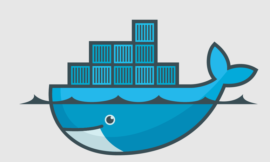Being in charge of web development for a website accessibility company requires curiosity and passion, according to the CTO at accessiBe.

Image: Shutterstock/Gorodenkoff
When he was 16 years old, in Tel Aviv, Israel, Niv Penso started writing scripts for himself, to automate repetitive tasks. “I fell in love with the idea that I could write a line of code and then it will just execute and like run for a few seconds and I will get an output immediately,” he said. Penso also remembers his father bringing a PC into the house: “I was all over it, trying to understand how to install things, how to install the new games,” he said.
He turned the passion into a career in web development. Now the CTO at accessiBe, Penso works with clients to develop websites that are accessible for people with disabilities—since only 2% of sites currently are.
When Penso realized this would be the field he would be working in, he started reading a lot—at a time when there weren’t as many how-to guides online. He would join his dad at work at the bank, and try to learn about the developers there, asking all kinds of questions. During his last years in high school, he studied Java and Pascal and other programming languages. The pivotal point was when he joined the Intelligence Corps of the Israeli Defense Force, where he was for nearly five years, advancing as a software developer from junior to senior developer.
SEE: How to build a successful developer career (free PDF) (TechRepublic)
Advice for anyone considering going into the field? “If you’re not passionate about what you do, then don’t do it—especially in development,” Penso said. “Otherwise this can make your life miserable.” If you do go into it, he recommends understanding “the principles of what you’re working on. Be curious.”
In his current role, he needs to oversee the design review or code review, to make sure his team is following the right guidelines. “We software developers, we all know that when we’re building a small project, everything is working nice and smoothly. But when we start to build a large system and try to scale it, this is the place where bad architectural design would affect you three months later,” Penso warned.
SEE: Web Developer Masterclass: Beginner To Advanced | Java Object-Oriented Programming & Design | The Very Big Data & Apache Hadoop Training Bundle (TechRepublic Academy)
His company’s goal is “to make the internet accessible by 2025 for people with disabilities,” Penso said. This can include when visually impaired people access a website and “add a plug and play software that can sit on top of their website,” he said. “That’s often when you bridge the gap between the website through the assistive technology. To make sure that any website would be able to install our plugin.”
On a typical day—he is working at the office, after a brief period of working from home during COVID—he starts around 11am. Some people work at night, some work in the morning, he said, but there’s usually a daily session of updates from the team. “The main idea of this session is to make sure that no one is blocked by anything,” Penso said. “And if they are, we can track it and resolve that as soon as we can.”
After that session, he has code reviews and design reviews. “There are a lot of sessions of code reviewing and design reviewing and holding architecture sessions. Also we have, sometimes, an interview if this is like a recruitment season.” During interviews, another developer will join Penso.
Occasionally, he “has to take some user story from the back login and maybe have another two minutes of hands-on and provide my two cents to the growth of the code base—but it doesn’t necessarily happen all the time,” Penso added.
The most interesting things in the job, technology-wise, are how to understand websites and how to convert them to be accessible, he said. The goal is to do it in a scalable way. 98% of websites are currently not accessible. “We have a critical mission over here to understand how we can scale it up and make sure that everyone that wants it to be accessible can use our widget or our tool basically. And install it and bam, from then on, their website will be accessible,” he said.”
He also wants to make media, like PDFs and Excel files, accessible, which is an interesting challenge, he said, since the technology has not been developed yet for this task.
The biggest surprise for Penso is “that a lot of people are not aware about how important accessibility is—and how much of the population relies on assistive technologies,” he said. “Our job besides providing tools or providing applications that would solve that, is we can increase awareness.
Read more articles in this series
Also see
Source of Article




